This article was originally written by Brandon Kraemer.
Proper specification of a power system in accordance with a generator set’s ratings and the specific application will ensure the required performance over the lifespan of the generator set, all while maximizing the value to the customer. Ratings such as total kW output, running time, load factors, emissions regulations, seismic compliance and more all have to be defined for every installation. In addition, while all manufacturers comply with most industry basic standards, some rate their generator sets in ways that require careful consideration.
There are four different types of ratings that must be considered when specifying a generator set for an application:
- ISO-8528-1:2005: This is an industry standard that defines the performance parameters required in various onsite power applications.
- Generator set manufacturers’ ratings: Certain manufacturers have ratings that exceed industry standards or take exception to certain operating parameters.
- Governmental regulations on engine emissions: The U.S. Environmental Protection Agency has environmental ratings and regulations for generator sets that vary by drive-engine horsepower and application.
- Application-specific industry standards: Various organizations and industry segments have created custom ratings to fit particular operational needs.
This array of ratings and standards can complicate the selection of the most appropriate generator set for a given application. This article will review the various ratings available from manufacturers and provide a guide to specifying the best power system solution.
Industry Standard Ratings
ISO-8528-1:2005 defines basic generator set rating categories based on four operational categories: emergency tandby, prime power, limited time prime and continuous power. In each category, a generator set’s rating is determined by maximum allowable power output in relation to running time and the load profile. Misapplication of the ratings can jeopardize longevity of the generator set, void manufacturer’s warranties or in rare instances risk catastrophic failure. Here is a detailed look at each operational rating category as defined in the standard.
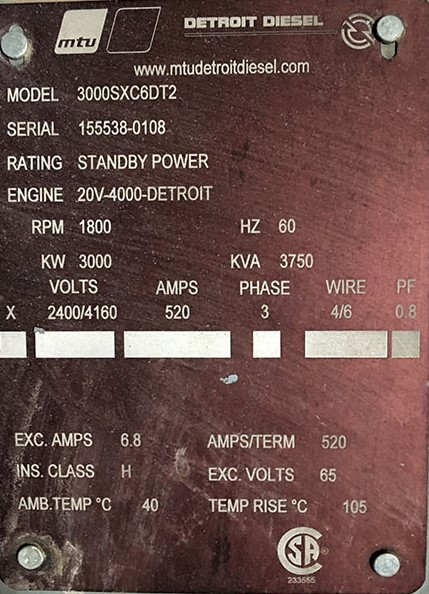
Emergency Standby Power (ESP)
The emergency standby rating is the most commonly applied rating and represents the maximum amount of power that a generator set is capable of delivering. An ESP generator set is normally used to supply emergency power to a facility in the event of a utility outage and for the duration of the outage until utility power is restored.
- ISO-8528-1 states that a ESP rated generator set must provide power “for the duration of the outage” and “with the maintenance intervals and procedures being carried out as prescribed by the manufacturers”. The ISO standard gives no limit to run time in the event of a utility power outage.
- Because the ESP rating is the maximum amount of power that the generator set is capable of delivering, no overload capacity is available for the ESP rating.
- ISO-8528-1 limits the 24-hour average load factor to 70 percent of the nameplate ESP rating, however, an individual engine manufacturer can authorize a higher 24-hour average load factor at its discretion. For example, all MTU engines in MTU Onsite Energy’s ESP rated generator sets are approved for an 85 percent 24-hour average load factor. This higher load factor increases the 24-hour average available generator capacity by 15 percent over the ISO standard and can help to reduce the size or number of specified generator sets required to support a given application.
Prime Power (PRP)
Generator sets rated for prime power are designed for supplying electric power in lieu of commercially purchased power from a utility. These are applications like rental generator sets supplying power for temporary use, as well as applications that are typically remote from a utility grid, such as wilderness outposts, remote mining, quarrying or petroleum exploration operations. ISO-8528-1 states that a PRP rated generator set must provide power “for an unlimited numbers of hours per year under the agreed operating conditions with the maintenance intervals and procedures being carried out as prescribed by the manufacturers”. Because the PRP rating is less than the ESP rating, overload capacity is typically available for the PRP rating, commonly used for electrical regulation purposes. However, this is not dictated by the ISO standard. ISO-8528-1 limits the 24-hour average load factor to 70 percent of the nameplate PRP rating, however similar to the ESP rating, an individual engine manufacturer can authorize a higher 24-hour average load factor at its discretion. For example, all MTU engines in MTU Onsite Energy’s ESP rated generator sets are approved for a 75 percent 24-hour average load factor. This higher load factor increases the 24-hour average available generator capacity by 5 percent over the ISO standard and can help to reduce the size or number of specified generator sets required to support a given application.
Limited-Time Running Prime (LTP)
Generator sets rated for limited-time running prime are typically designed for supplying electric power to utility as part of a financial arrangement. LTP applications include load management, peak shaving, interruptible rate, load curtailment and cogeneration. ISO-8528-1 states that a LTP rated generator set must provide power “for up to 500 numbers of hours per year with the maintenance intervals and procedures being carried out as prescribed by the manufacturers”. The LTP rating dictates no requirement for overload capacity. ISO-8528-1 allows the 24-hour average load factor to be up to the full LTP rating, or 100%.
Continuous Power (COP)
The continuous power rating is used for applications for which there is no utility power and the generator set is relied upon to supply a constant load for an unlimited number of hours annually. These applications such as remote power stations typically use multiple generator sets to achieve this constant load, which is also known in the industry as a “baseload power station.” The base load is the minimum amount of power that a utility must make available to meet its customers’ demands for power. ISO-8528-1 states that a COP rated generator set must provide power “for an unlimited numbers of hours per year under the agreed operating conditions with the maintenance intervals and procedures being carried out as prescribed by the manufacturers”. No overload is dictated by the ISO standard. Similar to the LTP rating, ISO-8528-1 allows the 24-hour average load factor to be up to the full COP rating, or 100%.

Manufacturer’s Ratings
Most manufacturers follow the ratings detailed in ISO-8528-1. However, some manufacturers have slight exceptions to these ratings in order to best fit their customer requirements, performance capabilities, or maintenance schedules. Four of the most common confusion points are net power versus gross power output, overload capability, load factor, and maximum run time allowed.
Gross Power Output versus Net Power Output: Most generator manufacturers offer remotecooled generator set versions with the intention that someone else will supply the cooling package for the generator set. This gives the system designer more flexibility as it allows for the cooling package to be mounted remotely in a different location than the generator set, which can be beneficial for some installations. As the cooling package is provided by a third party, the cooling fan power draw is often not considered as part of the complete system’s power output. Without the cooling fan power draw considered, the generator set’s power rating is considered the gross power output as some of the published power output will have to be used by the generator set to sustain its own operation. However if the cooling package’s fan power draw is subtracted from the generator sets output, this rating is considered the net power output. This can be thought of in terms of your pay, where your gross pay is what you make, but your net pay is what you put in the bank after taxes and other deductions. So when comparing genset ratings, it is important to evaluate them based on the complete system power output.
Overload Capability: Historically, the PRP generator set output was less than the ESP rating, and this would allow an overload capability to be utilized. For PRP rated units, this is commonly advertised as the 10% overload capability for some amount of time. For MTU powered generator sets, the 10% overload is available for one hour, out of every 12 hours with no limitation to how many times this can be done per year. Other generator set manufacturers state that this one hour overload can only be used up to 25 hours per year.
Load Factor: Load factor is commonly misunderstood in the industry as historically, generator sets were only known at their maximum application rating, also known as their nameplate rating. As generator set technology progressed, the equipment was asked to run harder than in the past. To give guideline for the typical average usage of the equipment, generator manufacturers used the average load factor as described by ISO-8528 as a key assumption to establish their maintenance schedules. When comparing products with different published load factors, it’s important to consider some of the advantages of a generator set with a higher published load factor. In the past, a more simple, single-step, generator set loading method was often used which was typically the highest power requirement for the generator set, and consequently the generator set size was dictated by this rating. This is known as your “starting power requirement”. In these system designs, the average power requirement of the generator set after the initial loading (called the “running power requirement”) was typically 40-60% of the nameplate rating which fit the 70% guideline from ISO-8528 well.
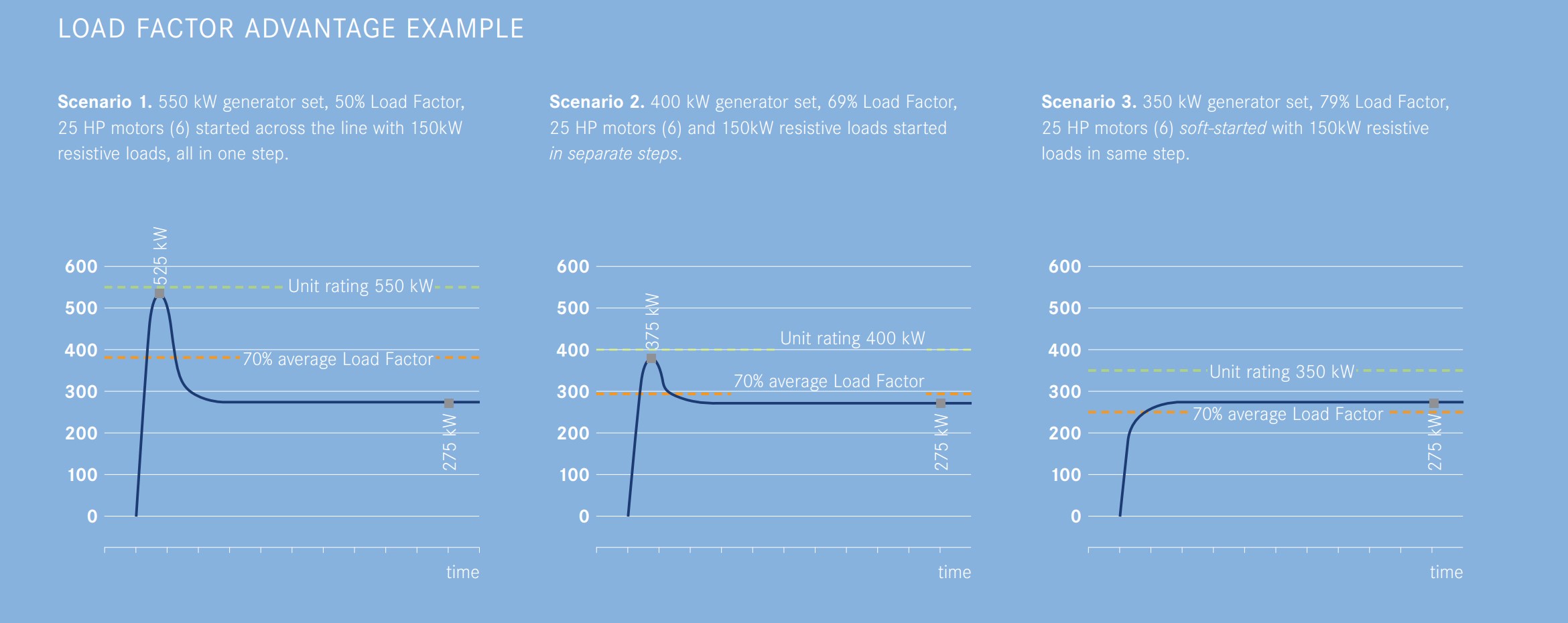
In comparison, today’s more complex, multiple step, soft-loading methods are often preferred by electrical engineers as they effectively reduce the starting power requirement, which often reduces the maximum power output required of the generator set and results in a better system cost to the user as a smaller generator set can be utilized. However by using the smaller generator set in the same system, the same running power requirement exists and is now a higher percentage of the nameplate rating, often resulting in a 75-85% load factor. In conclusion, a higher average load factor allows electrical engineers to take advantage of today’s more advanced loading methods which results in smaller generator sets, running at a higher average load factor, for a better system cost to the owner.
Maximum Run Time: Although the ISO-8528 standard makes a statement for the ESP maximum run time per year under test conditions, it does not state any run time limits in the event of a utility outage. As this is rather ambiguous, most generator set manufacturers’ have declared their own expected maximum annual run time, based on typical experience from the field. MTU powered generator sets have a 500 hour annual recommendation, where as some other manufacturers have a 50-200 hour limit. However this can be another source of confusion, as some customers will ask, what happens if I exceed this in the event of a utility outage? In this case, some manufacturers’ may have an alarm or forced shut down, but a MTU powered generator set will continue to produce power without issue. The only repercussion of this action will be executing the standard maintenance program quicker due to increased usage.
There is an natural inverse relationship between type of application and the estimated time before overhaul (TBO) of a generator set. In general, ESP rated equipment have higher power output than the same equipment with a PRP or COP rating, and because of this the ESP rated equipment also has the shortest TBO. This is generally fitting to an ESP application as they are typically used only 50-200 hours per year.
In contrast, generator sets used in PRP or COP applications have a more conservative output rating compared to the ESP rating, which allows for a longer TBO. With the typical usage of a PRP or COP rated generator set running many more hours in a year than ESP, the higher TBO is a significant benefit to the users of these applications by extending their maintenance schedules and decreasing product life-cycle costs.
Typical Engine Time Between Overhaul Curve
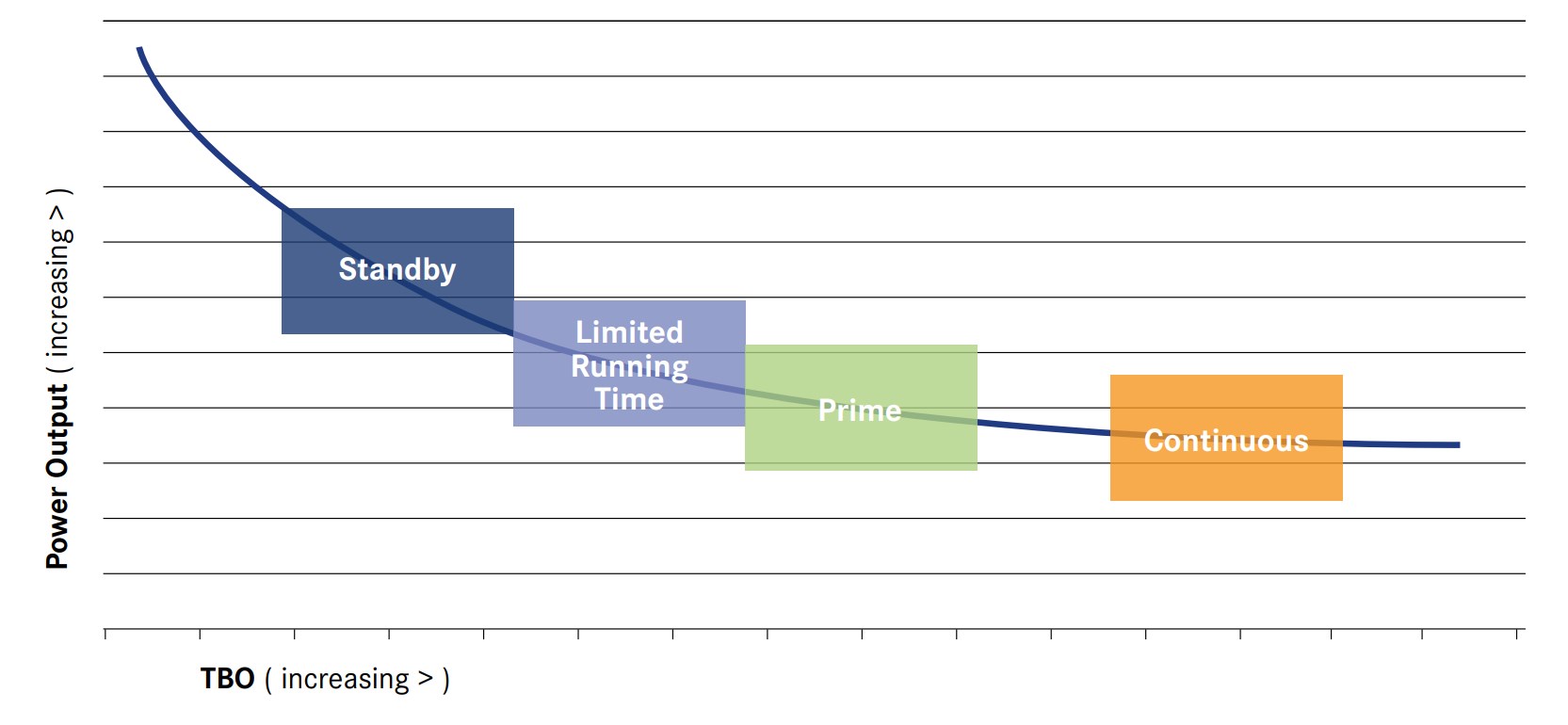
Some generator set manufacturers will share their time before overhaul (TBO) information, where others will not and rather rely on regularly scheduled inspection of the equipment’s condition. However, if the TBO is not known when comparing ratings from different manufacturers, it’s an incomplete comparison. One could end up purchasing a generator set with an increased load factor to compete with another manufacturer’s rating, without ever knowing the consequence being a decreased TBO which results in a higher cost of ownership over the lifespan of the product. MTU powered generator sets publish the TBO in the maintenance manual for every rating.
Governmental emissions ratings
An important rating that impacts diesel generator sets used in the USA is the Environmental Protection Agency (EPA) emissions rating. The EPA began to enforce limits on off-road engines use in generator sets in 2006 and began phasing in regulations by Tier levels and engine type. Some definitions one needs to be aware of are the differences between stationary emergency, stationary nonemergency, and mobile generator set engines. Emergency Engines An emergency engine can be used without time limit, during an emergency power outage only. But, there are a few exceptions. 100 non-emergency operation hours allowed for maintenance and testing. Recently re-defined by the EPA, there is an exception allowing up to 100 hours of the total 100 hour non-emergency limit, to be used for non-revenue generating, level 2 emergency demand response programs. Lastly, there is an exception allowing up to 50 hours of the total 100 hour non-emergency limit, to be used for non-revenue generating, grid stability and reliability needs.
Emergency classified diesel engines must only meet Tier 2, 3, and 4-interim (4i), depending on the maximum power of the engine. There is no federal regulation in place currently that requires a more stringent requirement in the future, so at this time the requirement is indefinite. Non-emergency Engines A non-emergency engine is more simple to distinguish, as it’s any engine that doesn’t meet the emergency engine category. Examples of this can be, a generator set a user wants to run before a storm hits while utility is available, or a genset located in a remote location where no utility power is available. A non-emergency diesel engine must meet Tier 4i emissions requirements until 2014 and 2015, where the indefinite requirement becomes Tier 4-Final (4F) depending on the maximum power of the engine.
Mobile Engines The last interesting part of the EPA regulations for generator sets is the requirements for nonstationary or mobile generator sets. Mobile generator sets fall into the same requirements of the non-emergency engines, which for diesel units require Tier 4i emissions requirements until 2014 and 2015, where the indefinite requirement becomes Tier 4-Final (4F) depending on the maximum power of the engine. However there is one exception to this rule, the Transition Program for Equipment Manufacturers (TPEM). The TPEM allows for mobile generator set manufacturers to use the previously accepted mobile genset engine Tier requirement for new equipment, in a limited quantity for a limited time period. This is often also referred to as the “mobile flexibility” provision, which MTU Onsite Energy is taking part in. Lastly, while these requirements refer to national EPA standards, be aware that local jurisdictions
— identified by EPA as nonattainment areas — may impose stricter emissions regulations on all types of generating systems.
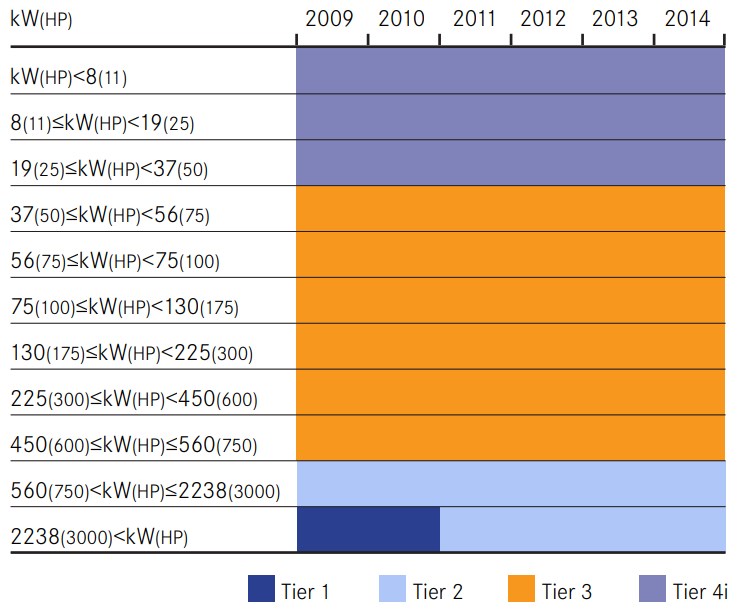
Emergency Diesel Engines
Used only in emergency situations when normal power source is interrupted. Exceptions are:
- Up to 100 hours annually of maintenance and testing.
- Recently re-defined by the EPA, there is an exception allowing up to 100 hours of the total 100 hour non-emergency limit, to be used for non-revenue generating, level 2 emergency demand response programs.
- Lastly, there is an exception allowing up to 50 hours of the total 100 hour nonemergency limit, to be used for non-revenue generating, grid stability and reliability needs.
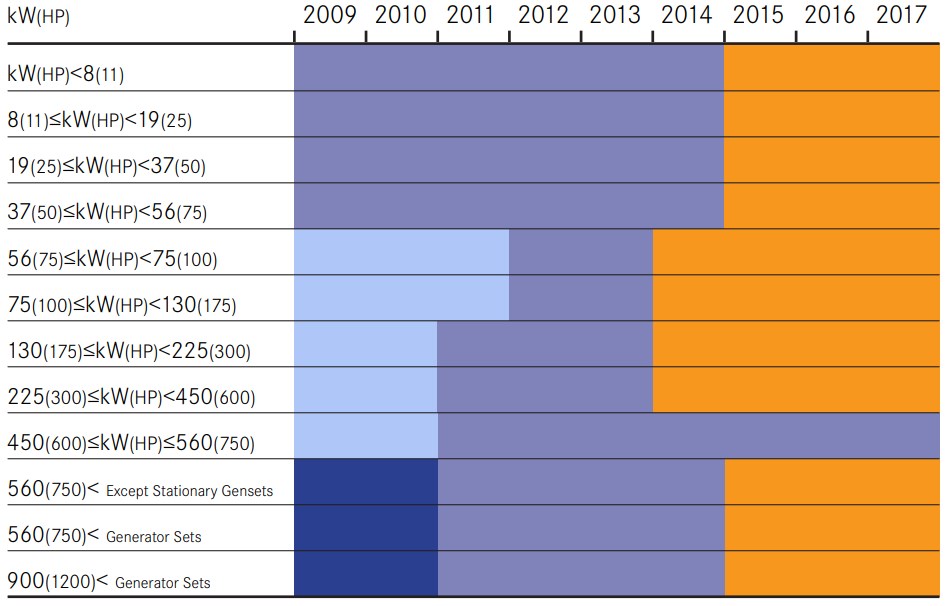
Non-Emergency Diesel Engines
- Any engine that exceeds the operating limitations placed on emergency engines.
- Can be used to supply power as part of a financial arrangement; including revenue generating utility programs.
- Any mobile genset must meet non-emergency requirements unless sold under the TPEM
Custom Industry Ratings
Continuous Standby One mission-critical organization called The Uptime Institute has set design standards for data centers, with the intention that data centers are designed with similar practices to ensure data safety. As generator sets are often a critical piece of the data center’s design, they have come up with some regulations to govern the generator sets that are used. One of these regulations defines acceptable generator set ratings for different levels or tiers (not to be confused with exhaust emission tiers) for data centers. One of the often confused attributes is the “Manufacture’s Runtime Limitation”. In this section of the Uptime Institute’s standard, they state that generator sets for tier 3 or 4 data centers, shall not have a limitation on the consecutive hours of operation when loaded to “N” demand, and generator sets that do have a limit on consecutive hours of operation are only suitable for tier 1 or 2 data centers. From this statement, data center designers frequently believe they must request a PRP or COP rated generator set to adhere to the “no runtime limitation” section. However, discussions between MTU Onsite Energy and the Uptime Institute have led to the common agreement that an ESP rated generator set is acceptable for tier 3 and 4 data centers, as long as the generator set’s “N” rating at site conditions follows the average load factor of the generator set with the normal requirements for maintenance being followed. This is acceptable to the Uptime Institute due to MTU powered generator sets’ having no run-time limitation for ESP ratings, as previously indicated. For these applications, MTU Onsite Energy will be happy to supply a letter as indicated by the Uptime Institute for compliance in a tier 3 or 4 data center.
Conclusion
Generator set ratings can be broken down into Industry Standard ratings, Manufacturer’s ratings, EPA emission ratings, and Custom industry ratings. The proper understanding of the standards will ensure the best rating selection for the purpose the generator set serves, which is the basic foundation to customer satisfaction.
